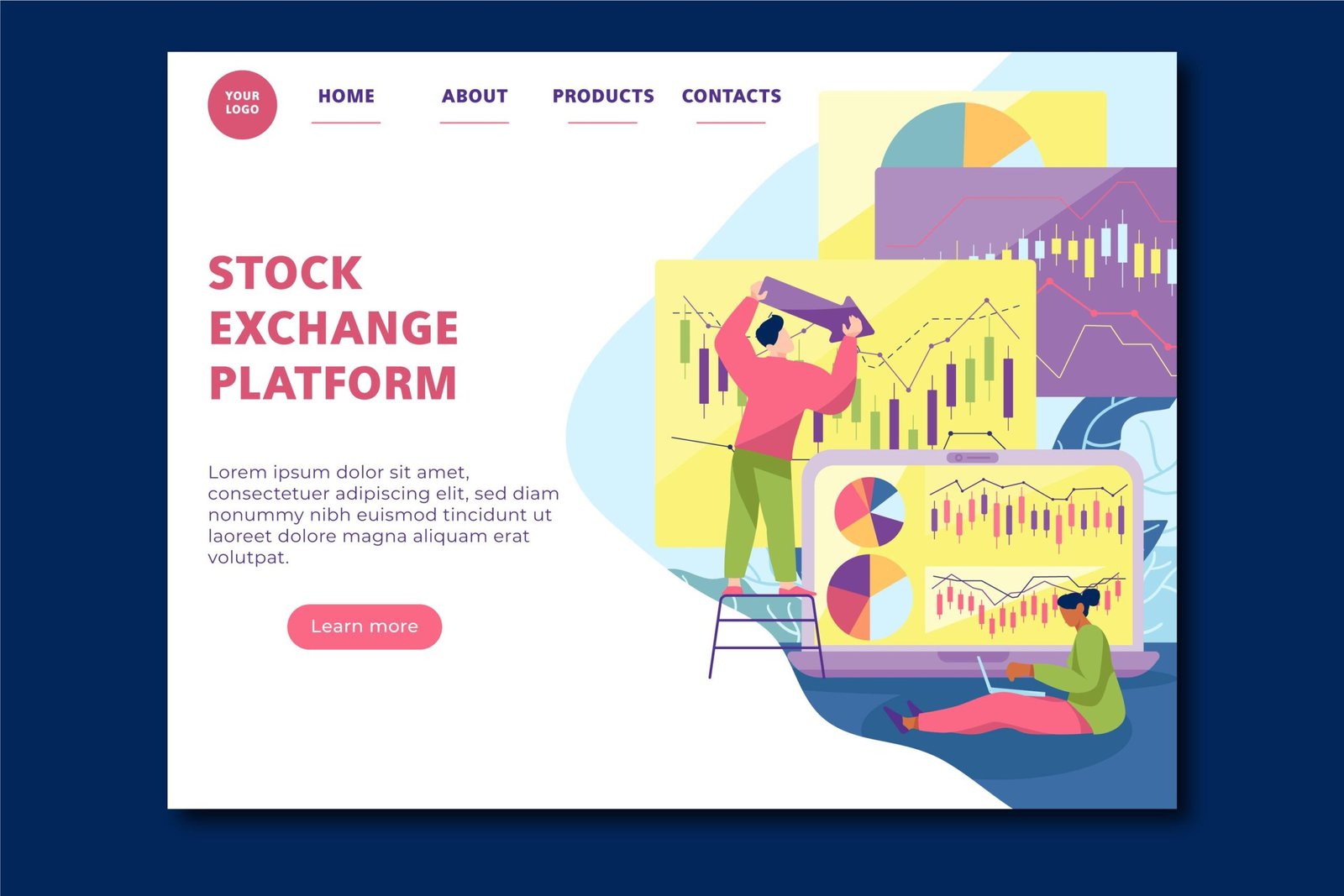The DAX40, or Deutscher Aktienindex 40, represents the 40 largest companies listed on the Frankfurt Stock Exchange, making it Germany’s most prominent stock index and a barometer for Europe’s largest economy. As global investors and traders keep an eye on critical financial markets, the DAX40 plays a pivotal role in understanding German and broader European market conditions.
Today, the DAX40 stands at the forefront of global trading strategies, reacting to daily economic indicators, corporate earnings, and geopolitical events. In this article, we’ll delve into the significance of the fintechzoom.com DAX40 today, explore the factors influencing its movement, and offer insights into trading strategies that can help you capitalize on market opportunities.
What is DAX40?
The DAX40 is Germany’s equivalent to the Dow Jones Industrial Average (DJIA) in the United States or the FTSE 100 in the United Kingdom. It comprises 40 blue-chip companies spanning various industries, from automotive giants to financial institutions and healthcare, technology, and energy firms. Some of the most influential companies within the DAX40 include Siemens, Volkswagen, SAP, Deutsche Bank, and Bayer.
As of today, the DAX40 provides a reliable measure of the health of Germany’s economy and serves as a critical tool for investors looking to gain exposure to European markets. The index is capitalization-weighted, meaning that companies with a higher market value significantly influence their overall movement. The performance of these leading companies is closely linked to global trends, including industrial production, export levels, and consumer demand, all of which contribute to the dynamic nature of the DAX40.
Why is the DAX40 Important Today?
The DAX40’s importance goes far beyond the boundaries of Germany. As the largest economy in Europe, Germany is heavily export-dependent, and its performance is closely tied to the global economy. Therefore, when you invest in or trade the DAX40, you’re not just speculating on German companies—you’re gaining exposure to international trade flows, technological advancements, and industrial innovation.
A Key Indicator for European Markets
Today is a critical indicator of European economic health in today’s interconnected financial world. Investors use it to gauge the performance of significant sectors within the Eurozone, including industrial production, pharmaceuticals, finance, and renewable energy. As one of the top global stock indices, the DAX40 is a benchmark for fund managers and institutional investors worldwide, reflecting investor sentiment in European equities.
International Exposure
Many companies listed on the DAX40 operate globally, so the index is sensitive to international events. Whether it is trade disputes, currency fluctuations, or shifts in government policies, the DAX40 can offer insight into how global factors affect European companies. In an economic environment where international trade agreements and economic policies constantly evolve, the DAX40 serves as a real-time barometer of broader market sentiment.
Current Trends Affecting the DAX40 Today
Several key trends are shaping the movement of the DAX40 today. These include macroeconomic factors, corporate earnings reports, monetary policies, and global economic developments. To understand how the DAX 40 performs today, we must analyze some of the most influential forces driving its fluctuations.
Inflation and Interest Rates
One of the most significant factors affecting the DAX40 today is the ongoing challenge of inflation and central bank policies. Central banks have been increasing interest rates to control price growth in response to rising inflation rates in Europe and across the globe. The European Central Bank (ECB) has been particularly active in this area, and its policies directly influence investor behavior within the DAX40.
As interest rates rise, borrowing costs for businesses increase, affecting profit margins and, in turn, stock prices. Moreover, higher rates can reduce consumer spending, which is crucial for industries like automotive and retail, which are heavily represented in the DAX40.
Corporate Earnings Reports
The performance of individual companies within the DAX40 also significantly impacts the index as a whole. Investors closely watch earnings reports for insights into how these companies navigate current economic challenges. In the most recent earnings season, major DAX40 companies like SAP and Siemens have reported solid growth, driven by strong demand in key markets.
However, not all DAX40 companies are faring equally well. Companies in the automotive and manufacturing sectors have been grappling with supply chain disruptions and rising energy costs, which have weighed on their stock prices. As corporate earnings reports continue to roll in, the overall direction of the DAX40 will depend on whether the positive performance of some companies can outweigh the challenges others face.
Energy Crisis and Sustainability Initiatives
Another critical factor influencing the DAX40 today is the ongoing energy crisis in Europe. In the wake of geopolitical conflicts, particularly between Russia and Ukraine, energy prices have skyrocketed, impacting companies’ operational costs, especially those in energy-intensive industries. Germany’s dependence on imported energy is a topic of concern. Still, it has sparked a renewed focus on sustainability and renewable energy sources.
Many DAX40 companies are ramping up investments in sustainable technologies and renewable energy projects as part of their long-term strategy to mitigate the risks of future energy price shocks. For instance, Siemens and Bayer are among the companies investing heavily in green technologies and sustainable practices, which could boost their stock prices in the coming years.
Geopolitical Tensions
Geopolitical instability remains a concern for the DAX40 today. The conflict in Ukraine and ongoing trade tensions between the United States and China continue to create uncertainty in global markets. For multinational companies that depend on global supply chains, disruptions caused by geopolitical tensions can lead to increased costs, lower production output, and fluctuating stock prices.
Traders should monitor geopolitical developments and their potential impact on DAX40-listed companies. For example, companies like BMW and Volkswagen, which have significant exposure to international markets, are vulnerable to sudden changes in trade policies or sanctions, affecting their index’s overall performance.
How to Trade the DAX40 Today: Key Strategies
Trading the DAX40 can be highly profitable, but it requires a clear understanding of the market and sound trading strategies. Whether you’re looking to capitalize on short-term price movements or hold positions for the long term, the DAX40 offers multiple opportunities. Below are some critical strategies for trading the DAX40 today.
Day Trading the DAX40
Day trading is one of the most popular strategies for trading the DAX40. Given the index’s volatility, traders can profit from small price movements throughout the trading day. When selling the DAX40 during the day, monitoring its news updates and economic data releases is essential, as it can create short-term market opportunities.
- Scalping: Scalping is a short-term trading strategy involving making numerous daily trades to capture small price movements. Traders who scalp the DAX40 typically enter and exit positions within minutes, aiming to profit from market volatility.
- Intraday Price Action: Day traders often focus on intraday price action and technical analysis to determine the best times to enter or exit trades. Tools like moving averages, Bollinger Bands, and candlestick patterns can help identify potential price reversals or continuation trends in the DAX40.
Swing Trading the DAX40
Swing trading involves holding positions for several days or weeks to capitalize on medium-term price movements. Unlike day trading, swing traders focus on longer-term trends and are less concerned with intraday volatility. Swing traders in the DAX40 typically use technical and fundamental analysis to identify potential entry and exit points.
- Trend Analysis: Swing traders often rely on trend analysis to determine the market’s direction. By identifying whether the DAX40 is in an uptrend or downtrend, traders can take positions that align with the broader market movement.
- Support and Resistance Levels: Understanding critical support and resistance levels can help swing traders identify potential price targets. When the DAX40 reaches these levels, traders can look for potential breakout or reversal opportunities.
Long-Term Investment in the DAX40
For long-term investors, the DAX40 offers a way to gain exposure to some of the most successful companies in Germany. By holding positions for months or even years, long-term investors can benefit from Germany’s economic growth and the stability of large-cap companies within the index.
- Diversification: Investing in the DAX40 allows investors to diversify their portfolios across multiple industries, including automotive, technology, finance, and healthcare. This diversification helps reduce risk and increases the potential for steady returns.
- Dividends: Many DAX40 companies offer attractive dividend yields, making the index an appealing option for income-focused investors. By reinvesting dividends, long-term investors can compound their returns over time.

Factors to Watch in DAX40 Trading Today
To trade the DAX40 successfully, staying informed about the factors that could influence its movement is crucial. Here are some key elements to monitor:
European Central Bank (ECB) Announcements
Monetary policy decisions by the European Central Bank (ECB) can significantly impact the DAX40. Changes in interest rates or quantitative easing measures can influence investor sentiment and alter the index’s direction. When the ECB signals tighter monetary policies, such as interest rate hikes, it could negatively impact the stock market as borrowing costs rise and economic growth slows.
Corporate Earnings Reports
Earnings season is a critical time for DAX40 traders. By analyzing company earnings reports, you can gain insights into how individual stocks—and the entire index—may perform in the short term. Positive earnings surprises can drive the index higher, while disappointing results can lead to sell-offs.
German Economic Data
Economic reports from Germany, such as GDP growth, unemployment rates, and consumer sentiment, can influence the DAX40. Robust economic data typically boosts investor confidence, leading to higher stock prices, while weak data can have the opposite effect.
Global Market Sentiment
Since many DAX40 companies operate internationally, global market sentiment can significantly influence the index performance. Pay close attention to factors like the U.S. Federal Reserve decisions, Chinese economic growth, and international trade policies, as these can create ripple effects across European markets.
FAQs
What is DAX40?
- The DAX40 is a stock market index that tracks the 40 largest companies listed on the Frankfurt Stock Exchange, representing a range of industries in Germany.
How can I trade the DAX40?
- You can trade the DAX40 through day trading, swing trading, or long-term investing strategies. Each approach requires a different focus, with day traders capitalizing on short-term price movements and long-term investors holding positions for extended periods.
What factors influence the DAX 40 today?
- Key factors influencing the DAX 40 include corporate earnings reports, ECB monetary policy, inflation, and global geopolitical events.
Why is the DAX40 important for global markets?
- The DAX40 is a benchmark for European and global markets because many of the companies in the index have significant international exposure.
What is the best time to trade the DAX40?
- The DAX40 is most active during European trading hours, from 9:00 AM to 5:30 PM CET. However, global events can impact its movement outside these hours.
How does inflation impact the DAX40?
- Rising inflation typically leads to higher interest rates, increasing business costs, and reducing consumer spending, negatively impacting stock prices within the index.
Conclusion
The fintechzoom.com DAX40 remains a vital indicator of Germany’seconomic health and a key player in global financial markets. Today, the index continues to be shaped by various factors. Inflation and corporate earnings to geopolitical tensions and sustainability initiatives. Whether you’re a day trader, swing trader, or long-term investor. Understanding the forces at play can help you make informed decisions and capitalize on the opportunities the DAX40 presents.
By staying current on market trends and employing sound trading strategies. You can navigate the DAX 40 effectively, regardless of market conditions. Whether tracking the latest ECB policy announcement or analyzing the performance of German companies. The DAX40 is a powerful tool for building a successful trading or investment portfolio.











